Structural Analysis of Molds with Conformal Cooling Channels: A Numerical Study †
Abstract
:1. Introduction
2. Procedure
2.1. Material Properties
2.2. Numerical Models
2.3. Conditions
3. Results and Discussion
4. Conclusions
- If the ANSYS APDL input files are appropriately configured, the procedure can be implemented on molds of any dimensions and with any number of cooling channels.
- This study aimed to examine the structural behavior of molds that incorporate conformal cooling channels. Extensive research has been dedicated to the investigation of conformal cooling channels in recent years, yet limited knowledge exists regarding their structural behavior.
- In the process of injection molding, it is common for the mold to experience pressures reaching magnitudes of several hundred MPa. The use of conformal cooling channels in injection molds under operational settings necessitates the use of static analysis as a crucial design tool for simulating structural behavior.
- The advancement of additive printing technology will facilitate the development and experimentation of conformal cooling conduits. This approach enables the use of different mold diameters, cooling channel counts, and part temperatures.
Author Contributions
Funding
Institutional Review Board Statement
Informed Consent Statement
Data Availability Statement
Conflicts of Interest
References
- Dimla, D.; Camilotto, M.; Miani, F. Design and optimization of conformal cooling channels in injection molding tools. J. Mater. Process. Technol. 2005, 164, 1294–1300. [Google Scholar] [CrossRef]
- Saifullah, A.; Masood, S. Finite element thermal analysis of conformal cooling channels in injection molding. In Proceedings of the 5th Australasian Congress on Applied Mechanics, Brisbane, Australia, 10–12 December 2007. [Google Scholar]
- Saifullah, A.; Masood, S.; Sbarski, I. New cooling channel design for injection molding. In Proceedings of the World Congress on Engineering, London, UK, 1–3 July 2009. [Google Scholar]
- Gloinn, T.O.; Hayes, C.; Hanniffy, P.; Vaugh, K. FEA simulation of conformal cooling within injection molds. Int. J. Manuf. Res. 2007, 2, 162–170. [Google Scholar] [CrossRef]
- Au, K.; Yu, K. A scaffolding architecture for conformal cooling design in rapid plastic injection molding. Int. J. Adv. Manuf. Technol. 2007, 34, 496–515. [Google Scholar]
- Wang, Y.; Yu, K.M.; Wang, C.; Zhang, Y. Automatic design of conformal cooling circuits for rapid tooling. Comput.-Aided Des. 2011, 43, 1001–1010. [Google Scholar] [CrossRef]
- Khan, M.; Afaq, S.K.; Khan, N.U.; Ahmad, S. Cycle Time Reduction in Injection Molding Process by Selection of Robust Cooling Channel Design. Int. Sch. Res. Not. 2014, 2014, 968484. [Google Scholar] [CrossRef]
- Mayer, S. Optimised Mold Temperature Control Procedure Using DMLS; EOS Whitepaper; EOS, GmbH Ltd.: Krailling/Munich, Germany, 2005; pp. 1–10. [Google Scholar]
- Au, K.M.; Yu, K.M. Variable distance adjustment for conformal cooling channel design in rapid tool. J. Manuf. Sci. Eng. 2014, 136, 044501. [Google Scholar] [CrossRef]
- Tan, C.; Wang, D.; Ma, W.; Chen, Y.; Chen, S.; Yang, Y.; Zhou, K. Design and additive manufacturing of novel conformal cooling molds. Mater. Des. 2020, 196, 109147. [Google Scholar] [CrossRef]
- Shen, S.; Kanbur, B.; Zhou, Y.; Duan, F. Thermal and mechanical analysis for conformal cooling channel in plastic injection molding. Mater. Today Proc. 2020, 28 Pt 2, 396–401. [Google Scholar] [CrossRef]




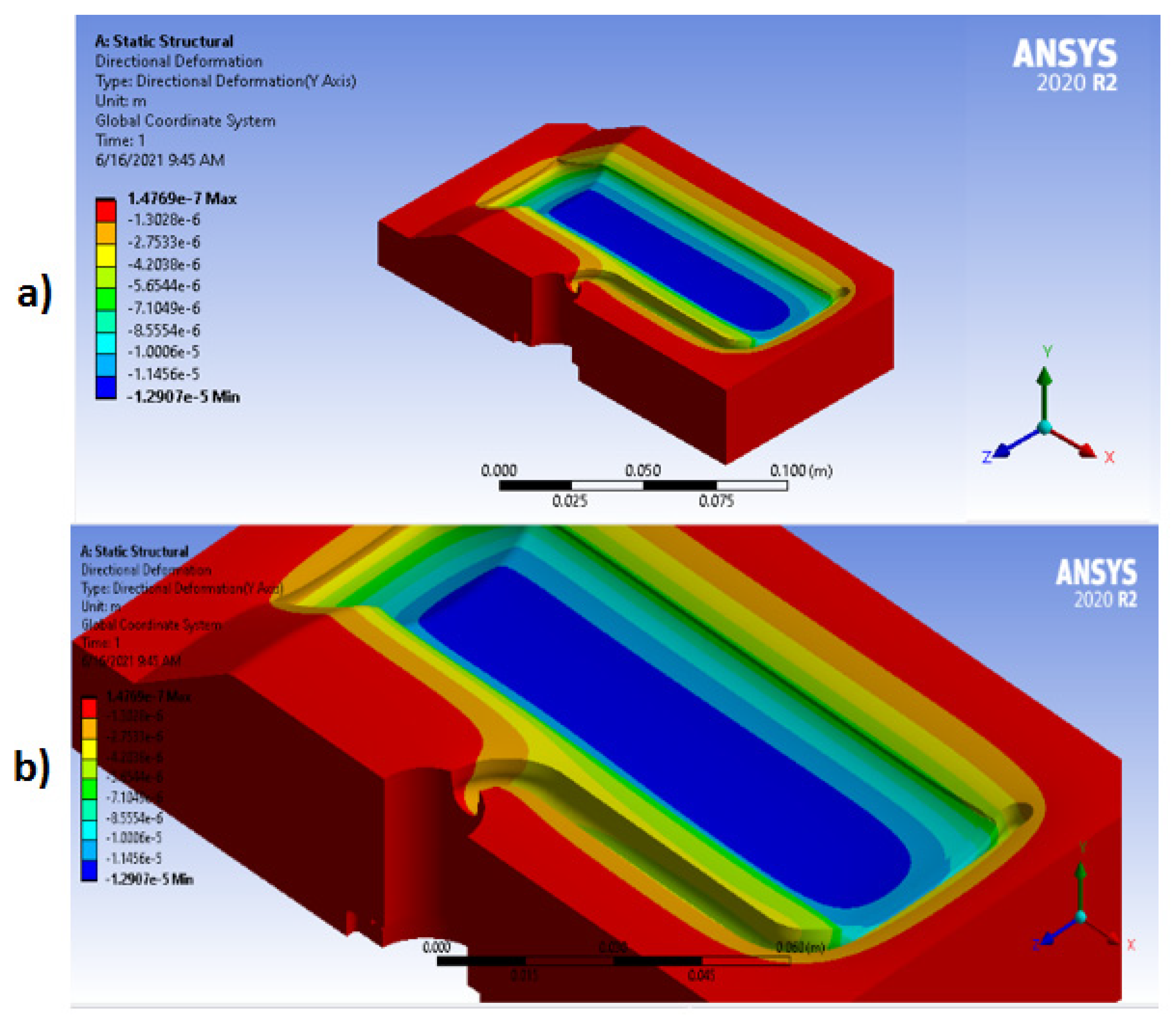
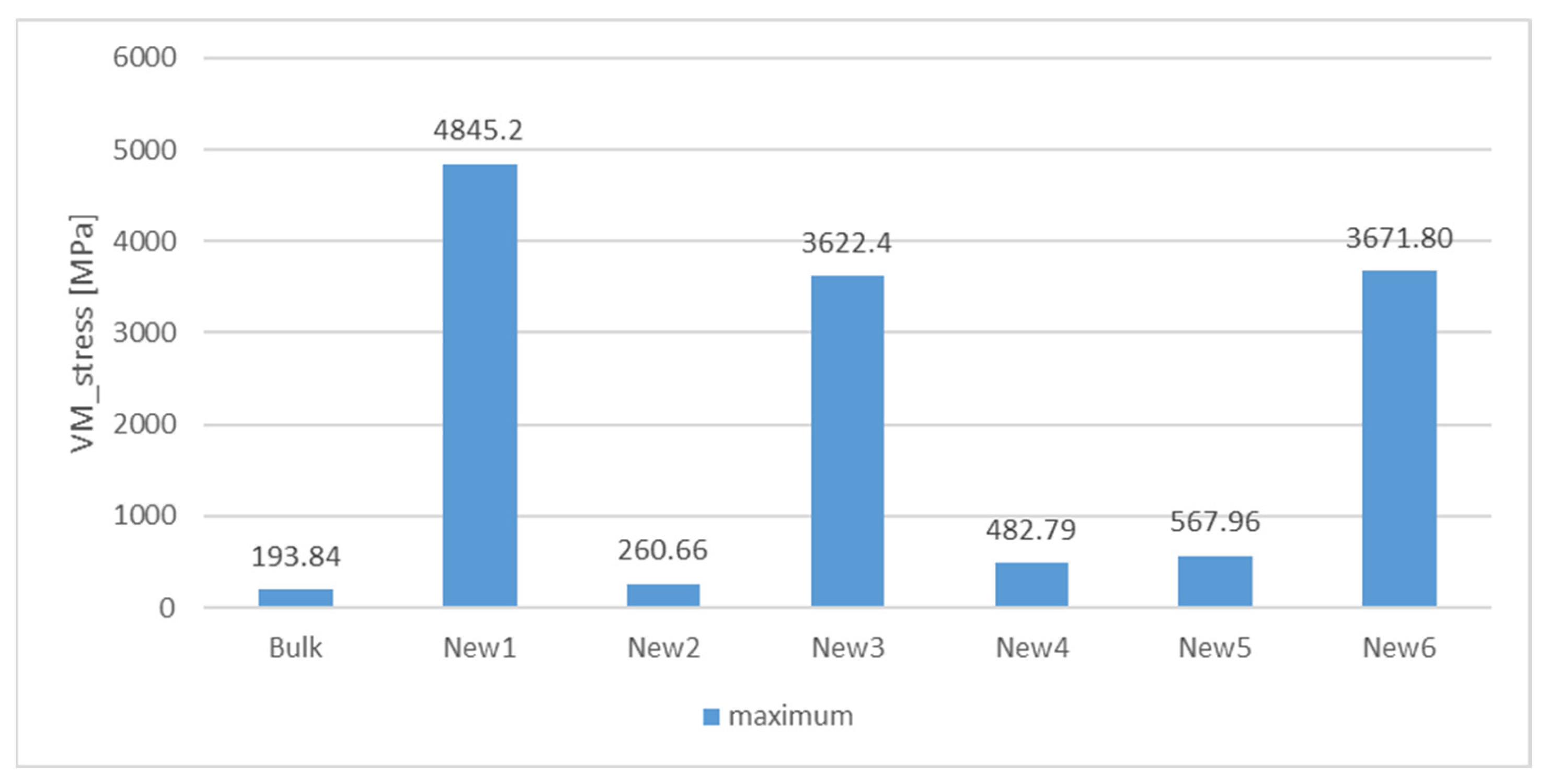
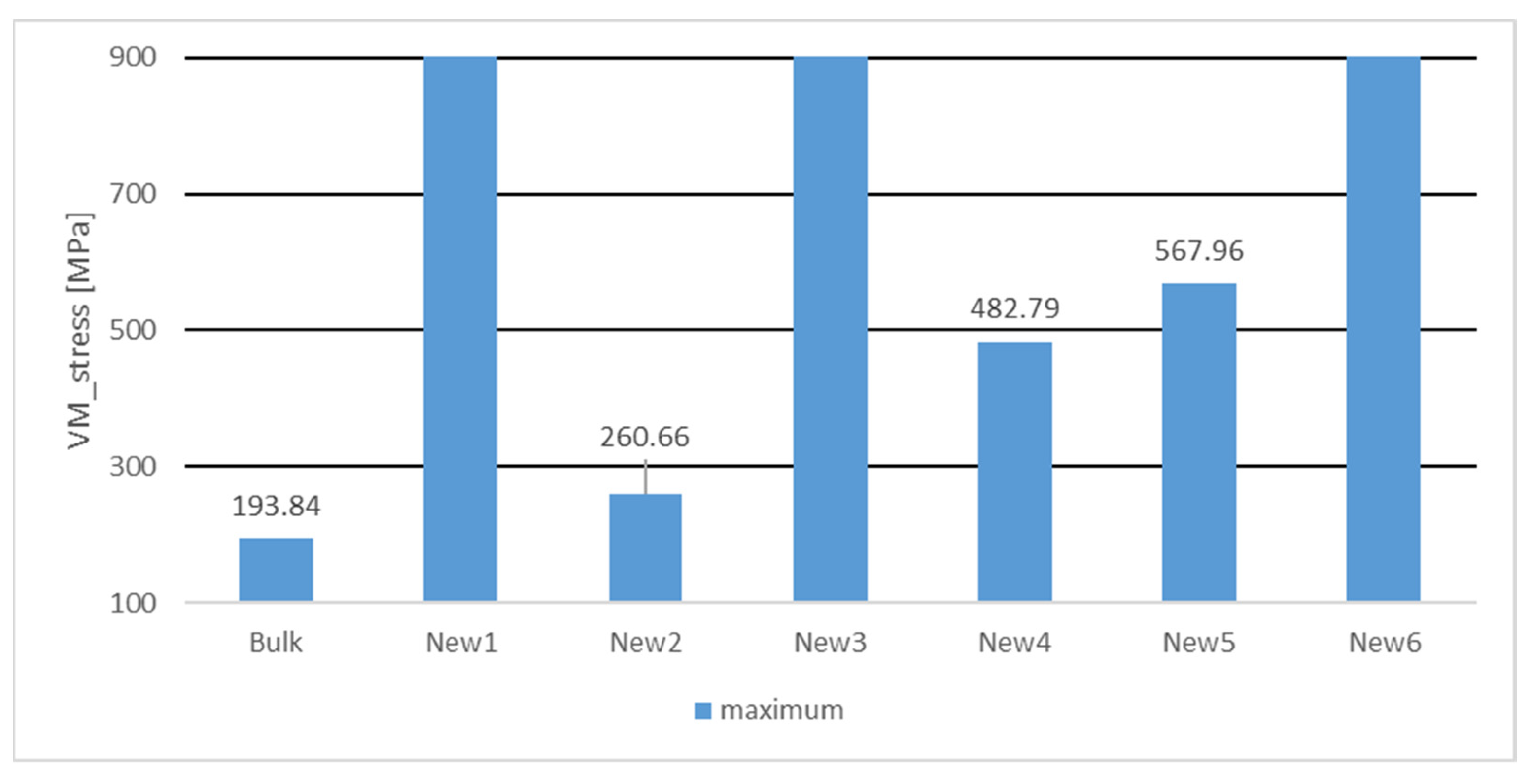
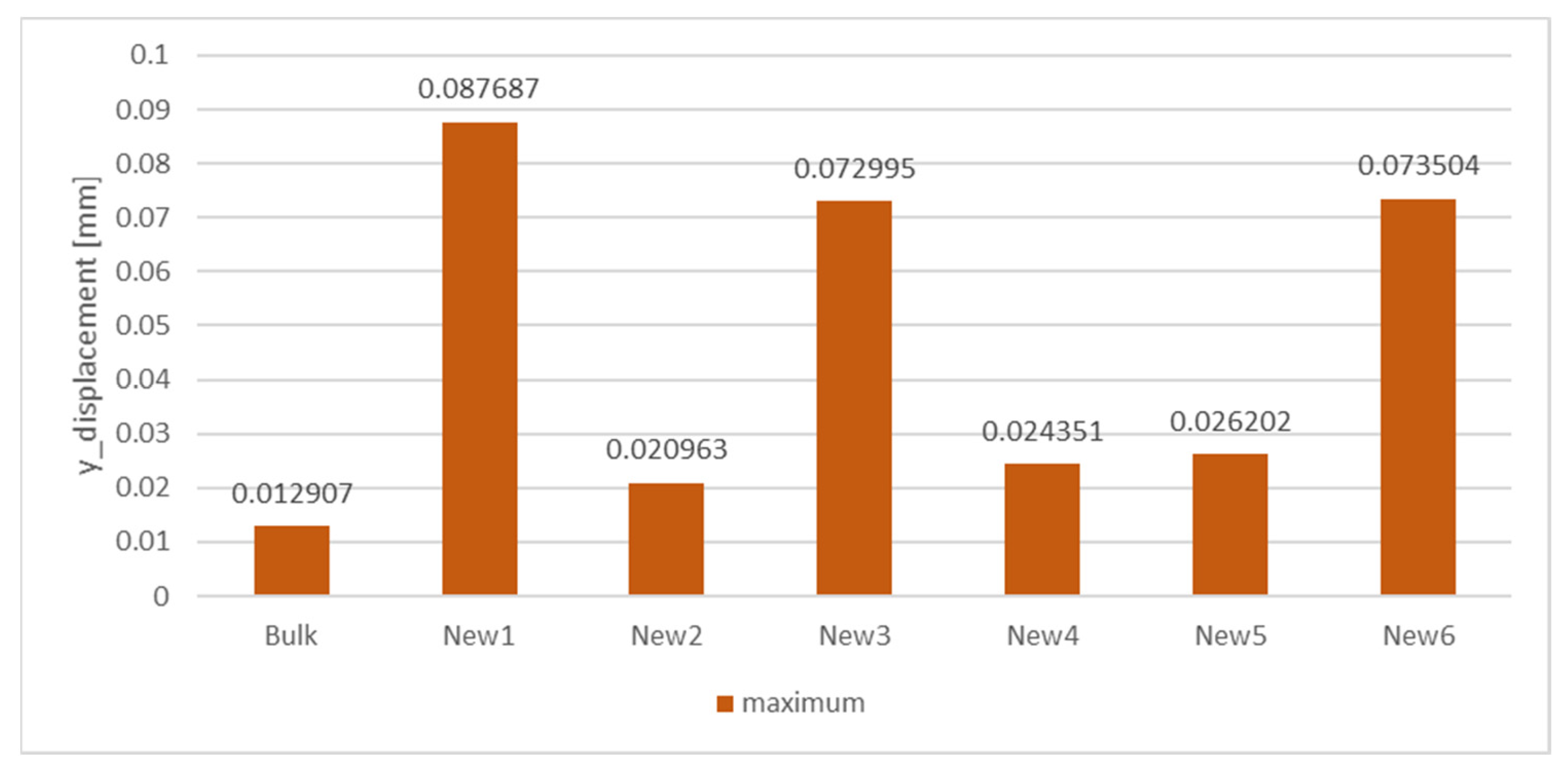
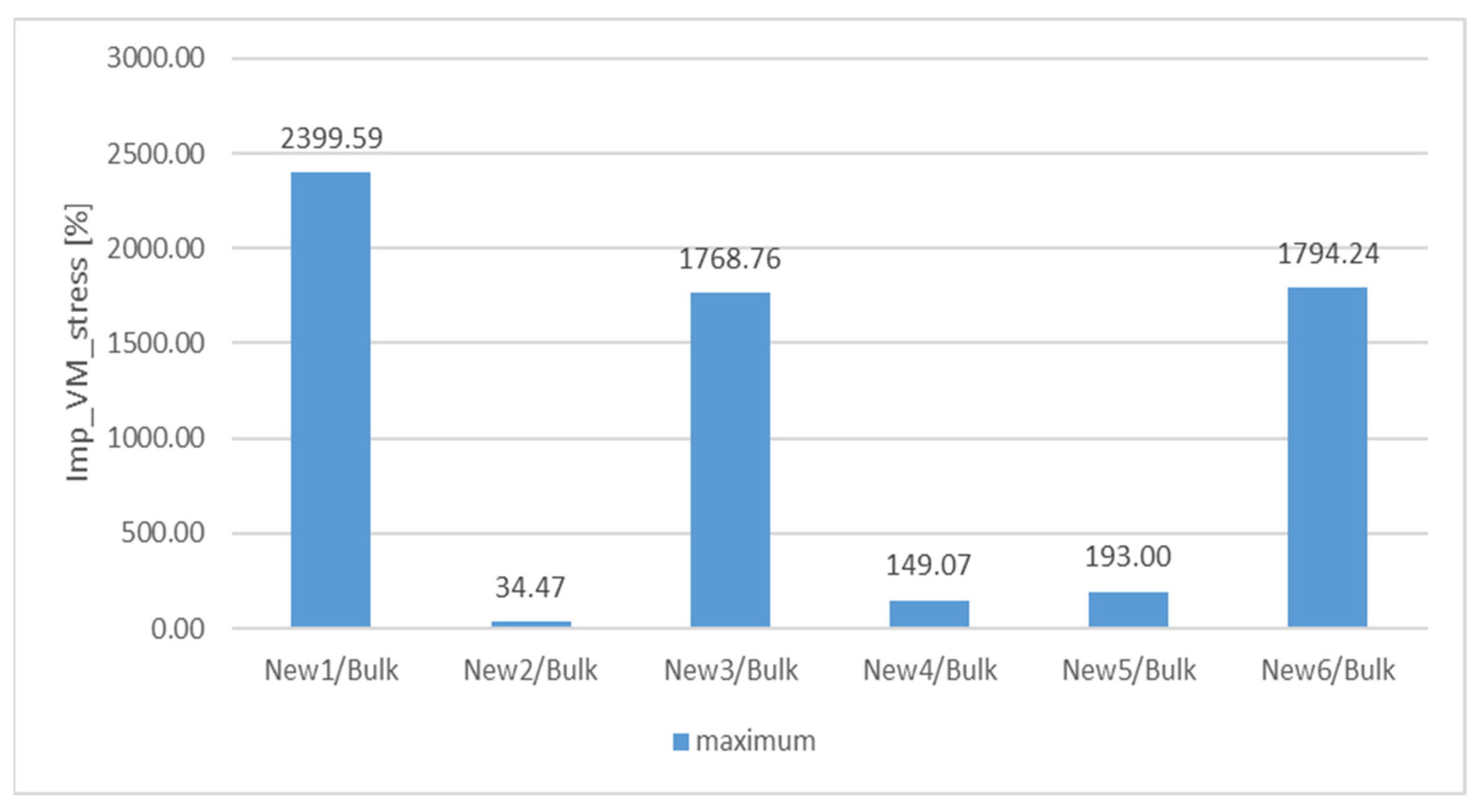
| Property | Value | Units |
|---|---|---|
| Ey | 180 | GPa |
| Ex = Ez | 185 | GPa |
| nx = ny = nz | 0.29 | [-] |
| Gxz | 69.8 | GPa |
| Gyz | 71.7 | GPa |
| Gxy | 71.7 | GPa |
| r | 7900 | kg/m3 |
Disclaimer/Publisher’s Note: The statements, opinions and data contained in all publications are solely those of the individual author(s) and contributor(s) and not of MDPI and/or the editor(s). MDPI and/or the editor(s) disclaim responsibility for any injury to people or property resulting from any ideas, methods, instructions or products referred to in the content. |
© 2023 by the authors. Licensee MDPI, Basel, Switzerland. This article is an open access article distributed under the terms and conditions of the Creative Commons Attribution (CC BY) license (https://creativecommons.org/licenses/by/4.0/).
Share and Cite
Silva, H.M.; Noversa, J.T.; Rodrigues, H.L.; Fernandes, L.; Pontes, A.J. Structural Analysis of Molds with Conformal Cooling Channels: A Numerical Study. Eng. Proc. 2023, 56, 295. https://doi.org/10.3390/ASEC2023-16614
Silva HM, Noversa JT, Rodrigues HL, Fernandes L, Pontes AJ. Structural Analysis of Molds with Conformal Cooling Channels: A Numerical Study. Engineering Proceedings. 2023; 56(1):295. https://doi.org/10.3390/ASEC2023-16614
Chicago/Turabian StyleSilva, Hugo Miguel, João Tiago Noversa, Hugo Luís Rodrigues, Leandro Fernandes, and António José Pontes. 2023. "Structural Analysis of Molds with Conformal Cooling Channels: A Numerical Study" Engineering Proceedings 56, no. 1: 295. https://doi.org/10.3390/ASEC2023-16614






